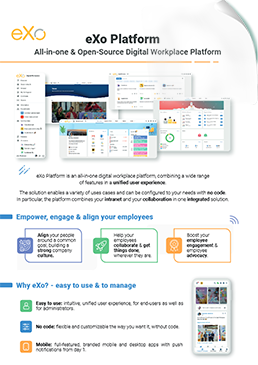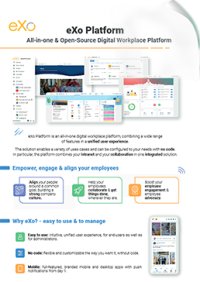


FREE WHITE PAPER
Discover our in-depth analysis of the concept of employee engagement, its roots, and ways to improve it significantly
Employee turnover is an inevitable part of running a business. However, high turnover rates can be costly and disruptive to an organization.
Understanding the true cost of employee turnover and how to calculate it is essential for businesses to make informed decisions about retention strategies, hiring practices, and overall workforce management.

This article explores the key features of employee turnover costs, provides a step-by-step guide to calculating these costs, and references relevant studies to support the discussion.
Employee turnover refers to the number of employees who leave a company within a given time period. Turnover can be voluntary (employees resigning) or involuntary (employees being terminated). High turnover rates can lead to increased recruiting and training costs, decreased productivity, and a disrupted organizational culture.
Turnover can be classified into several categories:
When employees leave the company by choice. This can be due to:
When the company decides to terminate an employee’s contract. This happens due to:
High turnover rates can be costly and disruptive, whereas controlled turnover can lead to innovation and fresh talent acquisition. Key reasons why businesses track turnover include:

The Complete Guide to
Employee Engagement
Discover our in-depth analysis of the concept of employee engagement, its roots, and ways to improve it significantly



Discover our in-depth analysis of the concept of employee engagement, its roots, and ways to improve it significantly
Organizations use the Employee Turnover Rate (ETR) formula to quantify departures:
Turnover Rate = ( Number of Departures in a Period Average Number of Employees ) × 100
For example, if a company had 10 employees leave in a year and maintained an average workforce of 100 employees, the turnover rate would be 10%.
According to the U.S. Bureau of Labor Statistics, the average annual turnover rate across industries in the U.S. hovers around 47%, with retail, hospitality, and healthcare experiencing some of the highest rates.
Employee turnover is a significant expense for organizations, with costs that extend far beyond recruitment and training. By understanding the true cost of turnover and how to calculate it, businesses can make informed decisions about investing in retention strategies and improving employee satisfaction. Industry studies consistently show that reducing turnover not only saves money but also enhances productivity, morale, and overall organizational success. By prioritizing employee engagement and implementing effective retention strategies, organizations can minimize turnover costs and build a more stable and motivated workforce.
The cost of employee turnover is more than just the expense of hiring and training new employees. It also includes the loss of productivity, the impact on team morale, and the potential damage to the company’s reputation. According to Josh Bersin, an analyst in the field, the cost of replacing an employee can range from 1.5 to 2 times the employee’s annual salary. For hourly workers, this cost can be as high as $1,500 per employee.
The cost of employee turnover extends beyond the obvious expenses of recruiting and training new hires. It includes both direct and indirect costs that can impact an organization’s bottom line.
Below are the key components of turnover costs:
Calculating the cost of employee turnover involves quantifying both direct and indirect expenses. While the exact formula may vary depending on the organization, the following steps provide a general framework for calculating turnover costs:
Average Recruitment Cost = Total Recruitment Costs Number of Hires
Training Cost = Cost of Materials + Trainer Salaries + Supervisor Time
Lost Productivity Cost = Employee Salary × Ramp-Up Time
Knowledge Loss Cost = Employee Salary × Percentage of Knowledge Loss
Total Turnover Cost = Recruitment Cost + Training Cost + Lost Productivity Cost + Knowledge Loss Cost + Indirect Costs
Understanding and calculating the cost of employee turnover is essential for businesses to maintain operational efficiency and financial stability. By identifying the direct and indirect costs of turnover and implementing strategies to reduce it, companies can improve employee retention and create a more positive work environment.
✔ Low Employee Engagement – Unhappy employees are 87% more likely to quit than engaged ones. (Gallup, 2023)
✔ Lack of Career Growth – 76% of employees cite limited growth opportunities as a reason for leaving. (LinkedIn Workplace Report)
✔ Poor Management & Leadership – “People leave managers, not companies.” Ineffective leadership is a primary cause of voluntary turnover.
✔ Non-Competitive Compensation & Benefits – Companies failing to adjust salaries to market trends risk losing employees to competitors.
✔ Work-Life Imbalance – Burnout and excessive workload contribute significantly to resignations.
Employee turnover is a critical challenge for organizations worldwide. High turnover rates can lead to increased costs, decreased productivity, and a disrupted workplace culture. However, with the right strategies, businesses can reduce turnover and retain top talent. This article explores proven methods to reduce employee turnover, supported by key features, studies, and actionable insights.
Discover our solutions for employee communications and engagement
Reducing employee turnover requires a proactive and multifaceted approach. Below are proven strategies, supported by studies and real-world examples:
Employee turnover is an inevitable aspect of business, but understanding its causes and impacts allows companies to implement proactive retention strategies. By fostering a positive work environment, offering career growth opportunities, and maintaining competitive compensation, organizations can minimize turnover and improve long-term success.
📌 Did you find this useful? Share your thoughts on how your organization manages turnover! 👇
By addressing turnover proactively, organizations can create a win-win situation for both employees and the business, fostering long-term growth and success.

eXo Platform 7 : The Open-Source
Digital Workplace Platform
Download the eXo Platform 7 Datasheet and discover all the features and benefits


Download the eXo Platform Datasheet and discover all the features and benefits
You will find here Frequently Asked Questions about employee turnover with all the answers in one place.
Employee turnover refers to the number or percentage of employees who leave an organization (voluntarily or involuntarily) and are replaced by new hires. High turnover can impact productivity, morale, and costs.
Employee turnover matters because it can significantly impact financial costs, productivity, company culture, and employer branding. High turnover leads to expensive recruitment and training, reduced efficiency, lower morale, and difficulties in attracting top talent. However, controlled turnover can also bring fresh perspectives and innovation.
Key reasons why businesses track turnover include:
Employee turnover can be caused by a variety of factors, including workplace culture, leadership, and compensation. Here are some of the most common causes:
Reducing employee turnover starts with identifying these causes and addressing them proactively to create a more engaging and supportive workplace. 🚀
High turnover has far-reaching consequences, including:
To reduce employee turnover, focus on creating a supportive and engaging work environment.
Here are 8 tips to reduce employee turnover:
By implementing these strategies, organizations can boost job satisfaction, engagement, and long-term retention.
Employee turnover can be categorized in several ways:
Voluntary Turnover:
Involuntary Turnover:
🔗 Discover the differences between voluntary and involuntary turnover
Internal Turnover:
External Turnover:
🔗 Explore strategies to convert external to internal turnover
To calculate the cost of employee turnover, you can follow these steps:
Turnover costs vary but typically include:
Employee turnover cost represents the total expenses an organization incurs when employees leave and need to be replaced. These costs include both direct and indirect expenses, such as:
( Your e-mail address will not be published)
I am a Digital Marketing specialist specialized in SEO at eXo Platform. Passionate about new technologies and Digital Marketing. With 10 years' experience, I support companies in their digital communication strategies and implement the tools necessary for their success. My approach combines the use of different traffic acquisition levers and an optimization of the user experience to convert visitors into customers. After various digital experiences in communication agencies as well as in B2B company, I have a wide range of skills and I am able to manage the digital marketing strategy of small and medium-sized companies.